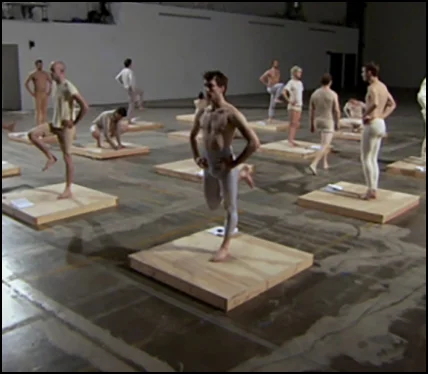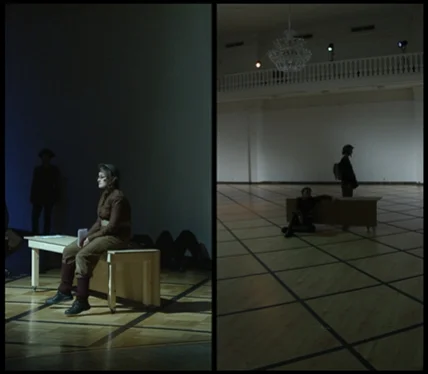ARNOLD WORLDWIDE: ASSOCIATE CONTENT CREATOR
My portfolio of work is drawn from my career as a visual artist. The projects below have been exhibited around the world, at institutions such as: Tate Modern, the Whitney Museum of American Art, and the Harvard Art Museums.
I've boiled down the three projects below to give you a radically simplified version of the way I work as an artist: after deep research of a subject, I answer a large and often conceptual question by using an innovative aesthetic strategy to craft an artwork out of a range of materials.
In all cases the projects were devised, produced, managed, and directed by me; although, as with any large endeavor akin to feature film production (which is the closest analogue to my artistic practice) these projects are born from collaboration.
Ärztliche Zimmergymnastik
SUBJECT: The physical culture of post-Enlightenment Germany leading up Nazism.
CENTRAL QUESTION: Does the way we compose our own bodies change the way we think about the fitness of other peoples' bodies?
AESTHETIC STRATEGY: Applying the tenants of high-modernist and minimalist sculpture (such as structuralism and the grid) to human bodies in performance.
MATERIALS: HD video installation; digital photography; sculpture (cement, wood); print-making.
The Allies
SUBJECT: Ideas about group behavior that grew out of WWI battle experiences.
CENTRAL QUESTION: How does the way we disperse information among the members of a group change the way the group functions?
AESTHETIC STRATEGY: Instructing performers to follow notational scores for movement (similar to the way musicians read a score for improvisation) instead of using choreography.
MATERIALS: HD video installation; digital photography; sculpture (cement, wood, glass crystals).
Force Tracking
SUBJECT: The visual history of war in the Iraq, from ancient Assyria to the modern-day.
CENTRAL QUESTION: How does the way we map our movements through physical space effect the way we tell stories, or even how we create history?
AESTHETIC STRATEGY: Arranging objects in a gallery so that a visitor's meaningful experience is comprised of moving around them—i.e., navigating interstitial space—rather than viewing the objects themselves.
MATERIALS: sculpture (steel, glass, mirror, vinyl, wood, cement)


